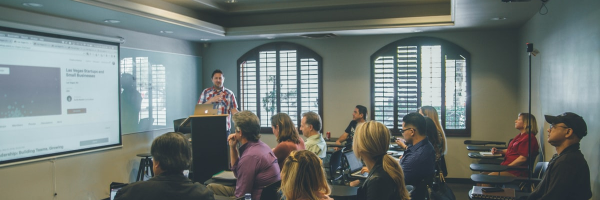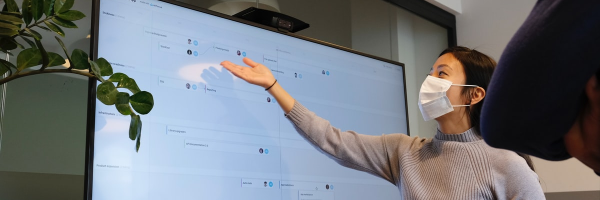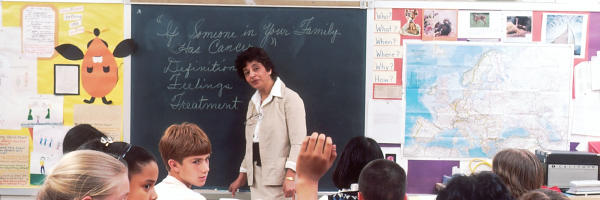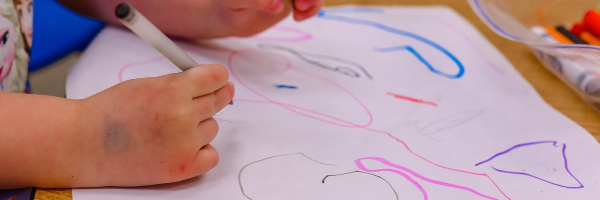Body language is a very important aspect of the teaching process. It helps teachers understand what their students are thinking and feeling. In fact, body language is so important that it should be included in teacher training.
There have been studies that show that teachers who master the art of reading pupil improve their skills by a whopping 20%. The best way to start learning how to read pupils is by observing them in a natural environment, for example when they interact with peers or adults not related to school.
In order to use body language when teaching, teachers should try being more animated during lessons. They should also try to maintain eye contact with pupils and use gestures while speaking around the class. We will explore more ways of using body language below.
- How To Use Your Body Language In School
- How To Use Your Body Language When Presenting To A Class Room
- Positive Body Language Examples
- Negative Signs Of Body Language Signs To Look Out For Teachers
- Body Language For Preschool Teachers
- Body Language For English Teachers
- How To Teach Body Language To Students
- Summary
How To Use Your Body Language In School

In school, teachers are constantly being judged for their body language. How they sit, stand, and interact with others can affect how the children perceive them in the classroom.
Teachers should use their body language in a more open way of expressing and communicating.
When you enter a room, you should always enter with a warm, true, and authentic smile to let people know you are in a happy mood and ready to start on a positive note.
You should always use open palms when talking with your pupils. This does one of two things: it shows them you aren’t concealing anything that could harm them, and it displays open and honest nonverbal.
When you greet a child or anyone in the school environment, always flash your eyebrows to say hello. This is a great nonverbal way of communicating. Without saying a word, they know you have acknowledged their presence.
When you stand make sure your hand never falls below your navel or belly button. This is known as the true plain coin by a guy called Mark Bowden. You can check out his Youtube Ted Talk below.
When we’re talking with students, it’s important to be aware of where our body language is pointing. Body language that points away from the other person communicates lack of interest and disengagement; body language that points to the other person communicates engagement and interest.
Always speak in a warm, natural tone to your students. This helps to create a hypnotic rhythm that soothes students. You can emphasize any points with pauses or changing your tone of voice.
Dress appropriately for this is non-verbal communication and first impressions count. If you want to command respect or earn it then you have to dress to impress. Don’t show up in a mess, it sends out the wrong signals.
How To Use Your Body Language When Presenting To A Class Room

Presenting in front of a class is no easy task. It can be nerve-wracking, especially if you’re presenting for the first time. And since the stakes are high, you want to make sure that your presentation goes well. Fortunately, there are some cool tools and techniques we can use to present the correct message.
- Dress to impress.
- Walk on with a warm smile.
- Show you palms as you walk on.
- Use illustrators with your hands that match your speech.
- A radio FM DJ voice tone.
- Make good eye contact with everyone (even people at the back)
- Hold your head up high.
- Walk with a straight posture.
- Keep your hands above your waste.
- Keep your hands on show.
Positive Body Language Examples

Body language is a powerful way of communicating with others. In fact, it can be argued that body language is more important than what we say. In the workplace, body language is an essential part of communication and negotiation. It can also be used to inspire confidence and trust among your co-workers. It’s imperative that you have good positive body language examples from which to choose in order to ensure success at work and in your personal life.
Positive Body Language Examples:
Smile: A smile sends a message of sincerity and happiness in the workplace or in social settings. Smiling increases how people relate to you and increases your attractiveness by making you look less stressed or unhappy.
Eye Contact: When speaking with someone, maintain eye contact for at least three seconds when responding to what they.
Hands: Keep your hands on show at all times with your palms facing outwards.
Keeping your hands on show with your palms facing outwards is the best way to keep the conversation flowing. This will make you more approachable and put you in a more receptive frame of mind.
Feet: often goes unnoticed when communicating with others. If a person’s feet are pointed towards you, this shows they are engaged with you.
Head tilt: A small head tilt can go a long way in showing interest and intrigue. This is a universal sign that people use when listening or reading to something they find interesting.
Head nod: Head nodding does two things: it confirms understanding and draws attention to the speaker.
Touching: People generally feel more connected to others when they touch them. Physical contact sends a signal to the other person’s brain that you’re safe and it will help with rapport.
Negative Signs Of Body Language Signs To Look Out For Teachers

Body language is a form of communication that is not spoken or written. It is all about how someone moves their body, stands, gestures walks, and speaks to communicate feelings and emotions.
Signs of negative body language are often easier to spot than positive ones. The positivity in the interaction can be displayed through facial expressions, eye contact, voice tone, and other non-verbal cues. The following are some signs that help identify negative body language:
Yawning: indicates boredom.
Rolling the eyes: indicates boredom or disdain for what is being said.
Lowered eyebrows: can indicate disbelief or disapproval of what is being said.
Crossed arms: indicates resistance to the speaker’s ideas or disagreement with what they are saying
Hand blocking: Putting your hand up to say no is a sign that they have had enough of what you’re saying.
There are many more negative boy language signs to look out for. To fully understand how to read body language, we suggest you take a look at this post for a more in-depth look into how to read body language.
Body Language For Preschool Teachers

Body language is important for any type of communication. It can be used to emphasize a point, show interest, or show disapproval. It’s also a great way to develop strong relationships with your students.
Some general gestures include:
Nodding your head up and down means approval
Shaking your head from side to side means disapproval
Raising an eyebrow means curiosity
Widening your eyes means surprise
Preschool teachers are not different, in fact, kids are better than adults at picking up body language signals. Using open body language is best when working with children of any age. It helps to build trust and once they know and trust you, you’ll get the best out of them.
Body Language For English Teachers
This section tackles the use and importance of body language in the English teaching profession.
Every profession has its own set of tools and instruments to use in order to be able to do their job well. Teachers are no exception when it comes to this. One such tool that can be used by teachers is something that people don’t always associate them with, their body language. Body language is a silent conversation that takes place between two or more individuals when they interact with one another both verbally and non-verbally.
The person who is teaching a class will learn a lot about their students just by reading the room through the way they hold themselves, where they choose to sit, how much eye contact they make with you, and other subtle cues like how much they blink while talking to you for example.
There are many ways to
How To Teach Body Language To Students

There are three major methods for teaching body language: modeling, observation, and practice. Modeling is the most common method because it is easy to see and understand what people are doing. Observation is the second most popular method because you can watch and study people’s body movements and gestures without their knowledge. Practice involves doing something with your own body to help you remember how to use it when you need it.
Teachers can take a hands-on approach by modeling different body language techniques in the classroom or in a personal setting.
With this approach, teachers can provide visual aids such as pictures of their own bodies during various stances which will make the lessons more memorable for students who struggle with understanding how nonverbal communication works.
We have a few posts about body language if you’re interested in reading them here.
Summary
Body language is a great tool for teachers to use in the classroom. It can be used to convey lessons, provide feedback, and improve communication. Teachers are limited when it comes to verbal communication with their students so body language is a great way to express what they are thinking or feeling without words. To learn more about body language for teachers check out our other post here.

